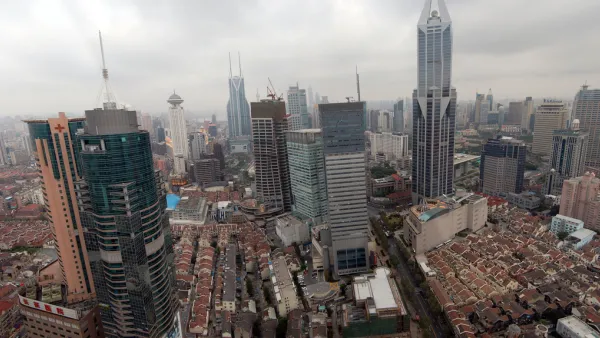I've been spending a lot of time over the past couple of years examining the planning literature on sustainable development. Sustainable development, as a concept, remains vague. For those interested, take a look at my recent article in the journal Property Management.
I've been spending a lot of time over the past couple of years examining the planning literature on sustainable development. Sustainable development, as a concept, remains vague. For those interested, take a look at my recent article in the journal Property Management.
But, does the practice of sustainable development provides real guidance for how we design communities and live? For example, is slowing down the rate of land development really a move toward sustainability? What's the difference if we run out of land in 300 years versus 500 years? At some point, real sustainability means that land must be recycled efficiently and effectively to accomodate future increases in population. Technology will be critical to achieving this, but its role is not necessarily embraced in the sustainability movement.
A case in point is agriculture and food production. The amount of farmland has been falling for decades. Headlines tend to blame sprawl. But, more farmland has been left fallow because of changes in technology than because urban land places a higher economic value on it. (For an analysis of this trend, see my policy brief here.) Improvements in technology have dramatically increased agricultural productivity, reducing the need for land and people to grow food. In short, the "foot print" for agriculture has become smaller. Technology, as a result, has changed very nature of what can be considered sustainable in food production--we're using less land (and other resources) in the U.S. and generating less demand for these resouces because of increases in productivity.
Unfortunately, the sustainable development literature, particularly that written in the environmental tradition, seems to focus on agricultural and food self-sufficiency as the goal of sustainable development policy. yet, self sufficiency, by its nature, implies a bigger environmental footprint and lower oveall productivity. Pursuing a food policy that focuses primarily on "home grown" food products may actually work against sustainability, both in terms of making the environmental footprint for agriculture larger as well as compromising our ability to sustain larger populations.

National Parks Layoffs Will Cause Communities to Lose Billions
Thousands of essential park workers were laid off this week, just before the busy spring break season.

Retro-silient?: America’s First “Eco-burb,” The Woodlands Turns 50
A master-planned community north of Houston offers lessons on green infrastructure and resilient design, but falls short of its founder’s lofty affordability and walkability goals.

Delivering for America Plan Will Downgrade Mail Service in at Least 49.5 Percent of Zip Codes
Republican and Democrat lawmakers criticize the plan for its disproportionate negative impact on rural communities.

Test News Post 1
This is a summary

Test News Headline 46
Test for the image on the front page.

Balancing Bombs and Butterflies: How the National Guard Protects a Rare Species
The National Guard at Fort Indiantown Gap uses GIS technology and land management strategies to balance military training with conservation efforts, ensuring the survival of the rare eastern regal fritillary butterfly.
Urban Design for Planners 1: Software Tools
This six-course series explores essential urban design concepts using open source software and equips planners with the tools they need to participate fully in the urban design process.
Planning for Universal Design
Learn the tools for implementing Universal Design in planning regulations.
EMC Planning Group, Inc.
Planetizen
Planetizen
Mpact (formerly Rail~Volution)
Great Falls Development Authority, Inc.
HUDs Office of Policy Development and Research
NYU Wagner Graduate School of Public Service




























